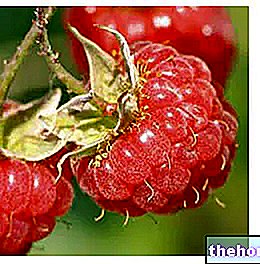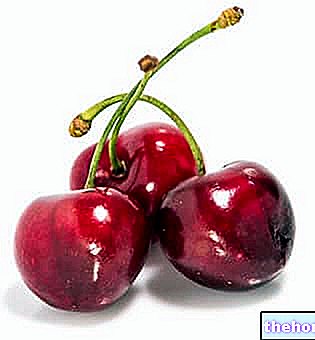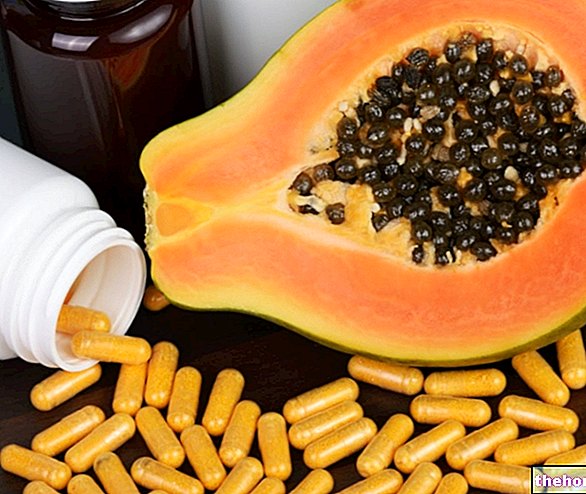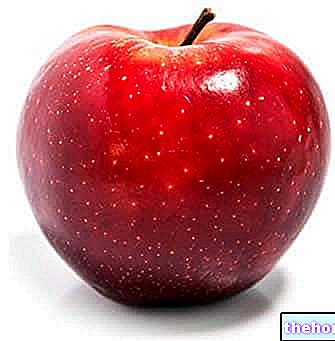What is Coconut Water?
Coconut water is the clear, translucent liquid contained in the unripe fruit of the plant Cocos nucifera (Arecaceae family).
Present only in still green coconuts, coconut water has an early development with respect to the maturity of the fruit (pulp); to better understand its biological function, it is necessary to know the nut botany described in the last paragraph of the article.

Extraction
To extract the coconut water from the nuts it is first of all necessary to pick them green, about 7 months old, without waiting for them to fall to the ground (when they already have a brownish / yellowish color). Fruits less than five months old tend to be bitter and lacking in nutrients.
To obtain the coconut water it is necessary to pierce all the external layers or cut one end, in order to create an opening in the internal cavity, which contains between 200 and 1000ml of water (depending on the type of cultivar and the size of the walnut).
NB. In younger nuts, coconut water can be under pressure and spray lightly when drilling.
Nutritional Characteristics
While coconut pulp is an extremely fatty food, coconut water does not contain a high portion of lipids.
In recent years, coconut water has been marketed as a natural energy drink or sports drink that is reduced in fat, carbohydrates and calories, but with good electrolyte concentration. However, the levels of sodium, potassium, magnesium and calcium contained in 100ml of product are not so high, nor even less balanced with respect to the needs of an adult human organism.
In fact, the marketing of coconut water attributes some health benefits to the product, however lacking in sufficient scientific evidence. For this reason, regulatory and control bodies (such as the US Food and Drug Administration) do not endorse, and indeed they try to oppose the disclosure of such misleading information.
For more information regarding the health properties of coconut water, we recommend reading the dedicated article: Coconut Water and Medicine.
Overall, coconut water is a low-energy food, with a caloric prevalence attributable to carbohydrates, followed by small quantities of proteins and fats. The fibers are irrelevant and cholesterol is absent.
As anticipated, the profile of mineral salts is not amazing (except for a fair portion of potassium), as well as that of vitamins.
Coconut water is a drink that lends itself to any diet, no one excluded (except for certain forms of renal failure). It does not provide nutrients that could negatively or positively affect metabolic diseases, even if in case of hyperglycemia, hypertriglyceridemia and overweight it would be better to avoid consuming significant portions. Contains potassium and sodium in a proportion of 2/1, a positive aspect for the diet of hypertensive people; nevertheless, even in this case, there are foods with decidedly more useful chemical properties.
Coconut water does not contain lactose and gluten, which is why it lends itself to nutrition against related intolerances.
It does not break the rules that distinguish vegetarian, vegan and raw food.
The average serving of coconut water is around 250-350ml (45-65kcal).
Coconut
As anticipated, the coconut is the fruit of the palm tree Cocos nucifera.
From the "outside to the inside", the walnut is structured as follows:
- smooth outer coating called peel or exocarp;
- fibrous padding called mesocarp;
- woody shell called endocarp, inside which the endosperm remains attached. The latter is the seed, which is the living, edible and extremely fatty portion of the coconut.
- The solid endosperm delimits an internal cavity, where coconut water (liquid endosperm) is formed and contained at an early stage.

These characteristics make the coconut a fruit that is super resistant to bad weather, shocks and maceration in both fresh and salt water. In fact, a coconut palm can spread its seeds even thousands of kilometers away, thanks to the sea currents that carry the fruit.
Regarding its longevity (thanks also to the "coconut water it contains), buoyancy and insulation (exocarp and mesocarp), the coconut was able to colonize distant lands, such as Polynesia (which, for those who did not know, originally it was totally bare due to its volcanic origins). It is however necessary to specify that the first place of diffusion of this plant has never been identified, above all thanks to the ability of the fruits to resist and navigate for weeks or even months.
Other Foods - Fruits Apricots Sour cherries Cashews Pineapple Watermelon Orange Avocado Banana Persimmon Persimmons Apple Chestnuts Cedar Cherries Coconut Watermelon Dates Feijoa Fig of India Figs Strawberries Berries Passion fruit (Maracujà, Granadilla) Jujube Kiwi Raspberries Coconut milk Lemons Almond milk Mango Apples Quinces Pomegranate Melon Blackberries Mustard Medlar Olives Taggiasca Olives Fermented Papaya Pears Peaches Plantains (Cooking Bananas) Pomelo Grapefruit Pink Grapefruit Plums, prunes Fruit juices and fruit juices Grape juice Plums Grapes Sultanas and Raisins OTHER ITEMS FRUIT Categories Food Alcoholics Meat Cereals and derivatives Sweeteners Sweets Offal Fruit Dried fruit Milk and derivatives Legumes Oils and fats Fish and fishery products Salami Spices Vegetables Health recipes Appetizers Bread, Pizza and Brioche First courses Second courses Vegetables and Salads Sweets and Desserts Ice cream and sorbets Syrups, liqueurs and grappas Prepare Basic tions ---- In the kitchen with leftovers Carnival recipes Christmas recipes Light diet recipes Women's, mom's and dad's day recipes Functional recipes International recipes Easter recipes Gluten-free recipes Diabetic recipes Holiday recipes Valentine's Day recipes Vegetarians Protein recipes Regional recipes Vegan recipes




























